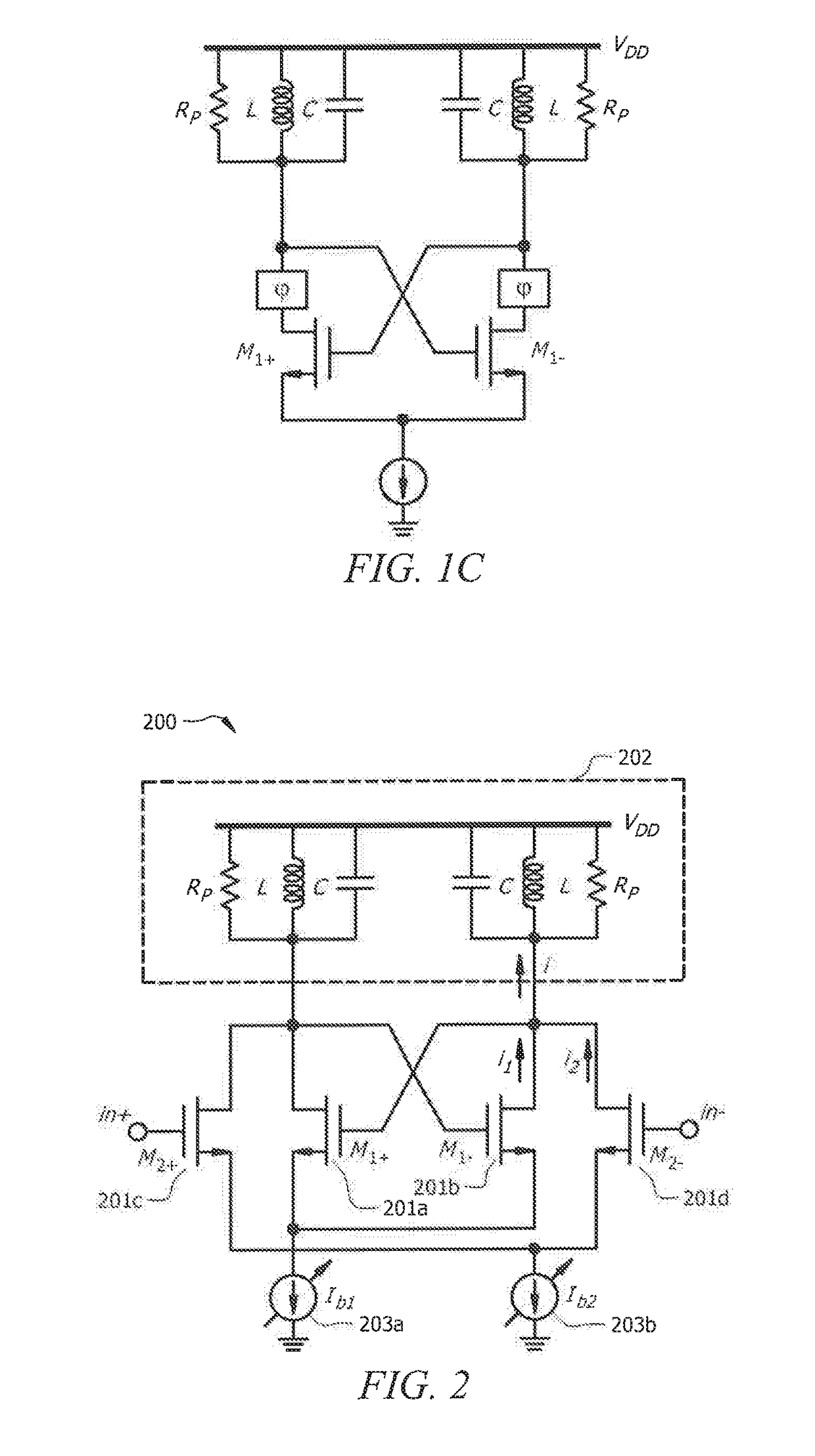Phase-tuning oscillators
a phase-tuning oscillator and phase-tuning technology, applied in the direction of oscillator generators, pulse generation by logic circuits, pulse techniques, etc., can solve the problems of phase noise degradation, circuit design and implementation of vcos suitable for direct lo signal synthetization, and the factor of tuning varactors is predominantly low, so as to achieve low power and simplicity. the effect of simplicity
- Summary
- Abstract
- Description
- Claims
- Application Information
AI Technical Summary
Benefits of technology
Problems solved by technology
Method used
Image
Examples
Embodiment Construction
[0029]FIG. 1A shows a conventional differential inductance and capacitance (LC) based oscillator implementation as differential oscillator 100. It should be understood that stable oscillation of the differential LC oscillator of the illustrated example requires the negative transconductance of the cross-coupled transistor pair (M1+ and M1−) to be sufficient to compensate the tank loss represented by RP. In particular, this is the gain condition and an underlying phase condition is automatically satisfied when the oscillation frequency is derived. By treating the differential oscillator as a feedback loop composed of two single-ended inverting buffers, the phase condition that the total phase shift along the loop should be 360° becomes apparent. Since each of the cross-coupled transistors (M1+ and M1−) has a 180° phase difference between their output current and input voltage, the LC tank is required to contribute 00 phase shift, resulting in oscillation at the resonance frequency (i...
PUM
 Login to View More
Login to View More Abstract
Description
Claims
Application Information
 Login to View More
Login to View More - R&D
- Intellectual Property
- Life Sciences
- Materials
- Tech Scout
- Unparalleled Data Quality
- Higher Quality Content
- 60% Fewer Hallucinations
Browse by: Latest US Patents, China's latest patents, Technical Efficacy Thesaurus, Application Domain, Technology Topic, Popular Technical Reports.
© 2025 PatSnap. All rights reserved.Legal|Privacy policy|Modern Slavery Act Transparency Statement|Sitemap|About US| Contact US: help@patsnap.com



